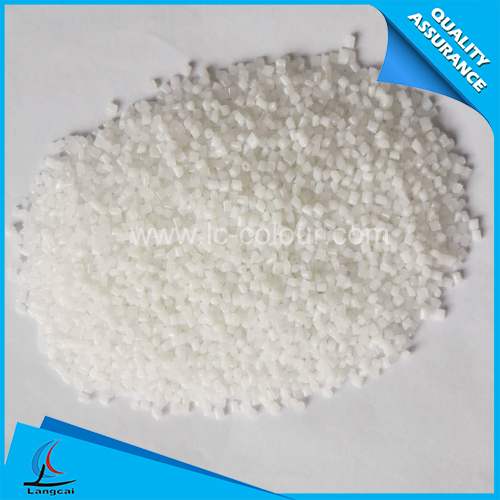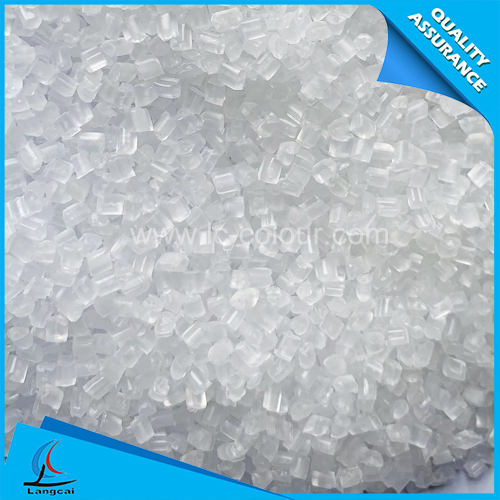- Nonwoven Fabrics
- Tailor Made Masterbatch
- Plastic Masterbatch
- Chemical Fiber Masterbatch
- Functional Masterbatch
- Machinery
- Spunbond PP Nonwoven Masterbatch
- Mono Color Masterbatch
- Liquid Color Masterbatch
- Non-woven Masterbatch
- Polyester Fiber Masterbatch
- Nylon Fiber Masterbatch
- Polypropylene Fiber Masterbatch
- Lab Nonwoven Machine
- Lab BCF Machine
- Dryer
- Filler Masterbatch
- How can the refined cotton industry navigate through the trade fog between China and Japan
- Why choose Mono Color Masterbatches? Three major advantages highlight value!
- The "Symbiotic code" between domestic and overseas markets
- The application advantages of Plastic Masterbatches are remarkable!
- How will the "balanced development of imports and exports" be promoted during the "15th Five-Year Plan" period?
- Why choose Mono Color Masterbatches?
- Phone:00836 - +86-535-8484358
- Email:wendy@ytlc-colour.com
- Address:DALAN INDUSTRIAL PARK, ZHANGXING TOWN, ZHAOYUAN CITY, SHANDONG, CHINA
Since the second half of this year, Sino-US trade friction has been escalating. On June 15, the United States announced that it would impose tariffs on US$50 billion of goods originating in China. On July 6, the United States officially imposed a 25% tariff on US$34 billion in Chinese products; from August 23, the Trump administration For the $16 billion Chinese goods, a 25% tariff is imposed; on September 24, the United States imposes a 10% tariff on the Chinese goods of about US$200 million, and the tax rate will increase from January 1, 2019 to 25%.
Anxiety of textile enterprises under trade friction
The three tariff adjustments eventually led to a sharp increase in tariffs on China’s $250 billion in commodities entering the US market. According to the statistics of the China Chamber of Commerce for Import and Export of Textiles, nearly 1,000 textile and apparel products of the tax number are affected, involving all kinds of textile yarns, fabrics, industrial finished products and some home textiles.
Such data has caused many textile and garment export enterprises to be anxious. Some home textile fabric companies have said that they have been preparing for the autumn and winter new products and proofing in the past, but they did not dare to take orders this year. The relevant person in charge of a large export enterprise in Jiangsu said that “the textile products are not sophisticated and highly replaceable, coupled with the low profit margin of the industry and the ability to withstand pressure.”
Export enterprises take the initiative to seek change
However, some companies have taken the initiative to seek change. Li Zongxing, general manager of Guangzhou Jinke Sporting Goods Co., Ltd. said that although the United States is unlikely to tax China's exports to the United States, China's textile and apparel products should have a broader market to cope with the changes.
Data show that in the first half of 2018, Chinese clothing accounted for less than 30% of the US market share, while Vietnam's share rose to more than 15%. Statistics show that in the second quarter of 2018, US apparel imports were basically stagnant, up only 0.5% year-on-year, with imports from China dropping sharply, down 5.7% year-on-year.
Some experts suggest that companies should not rely too much on the US market. “This is a market with a lot of uncertainty. If you put all your eggs in the US basket, you will definitely have uncertainty about expectations.”
Recently, Li Zongxing is preparing for the 18th Australian China Textile and Apparel Show in Melbourne in November. Jinke Sports has participated in the exhibition twice. In addition to Australia, the main export markets of the company are the United States and Canada. He told reporters: "The list of tariffs imposed by the United States currently has little impact on the types of products we make. How to deal with them depends on further changes in the market. But at the same time, we are very concerned about other markets, such as Australia, which are worthy of deep cultivation. ”
According to the statistics of the China Chamber of Commerce for Import and Export of Textiles, in the first half of 2018, Australia imported 2.956 billion US dollars of textiles and clothing from China, an increase of 3.5%, including textiles of 700 million US dollars, an increase of 6.1%, and clothing of 2.256 billion US dollars, an increase of 2.3%. Li Zongxing said that although the market is not big, he has his own unique side.
The main products of Jinke Sports are sports and fitness apparel. Although Australia has a population of more than 20 million, the local people have a good habit of sports and there is a great demand for sportswear. The market has a very broad space. In addition, according to Li Zongxing, most of its customers are local small and medium-sized brands, which pay great attention to design and fashion.
Why is the Australian market worthy of deep cultivation?
In recent years, Australian e-commerce has grown rapidly. E-commerce sales in Australia increased from $1.7 billion in 2014 to $2.2 billion in 2017, with an annual growth rate of about 8%. 28% of Australian shoppers often shop on their mobile phones. According to statistics, 40% of Australian consumers consider fashion products (clothing, shoes, handbags, swimwear and accessories) to be the most frequent online shopping products. The average order value increased by 18% to reach $123.39, and the growth of this type of product was the most stable.
In this regard, Zheng Zhixiao, general manager of Zhejiang Hongtai Knitting Co., Ltd., which mainly produces knitted garments, holds the same view.
This year, he will travel to the Australian China Textile and Apparel Show for the fourth time. “There were many customers who came to the exhibition before to do business as e-commerce. Our main products are sweaters. They prefer models with relatively simple and generous styles.”
In fact, in addition to Australia, the company's export market also includes Europe and Canada. “The European market accounts for 70%, and Australia accounts for a small proportion of only 10%.” Even so, Zheng Zhixiao still attaches great importance to the Australian market. “After several years of observation, this market has been very stable, and it can be seen that it is becoming More and more fashionable, this is closely related to the rapid development of e-commerce. Although the order quantity is small, only 3/1~5/1 of the European market, but it pays great attention to the quality. The customers who purchase are also very clear about the cost of China. It is higher than Southeast Asian countries, but it can complete more complicated orders."
Zhang Yijia, manager of Dongguan City Gege Garment Co., Ltd., who specializes in women's clothing, said: "The current environment is not good, the Australian market is actually OK. The characteristics here are obvious, the list is small, the trend is not at the forefront, but still the style, fashion There is demand, but it is better than many markets, perhaps related to Australia's developed tourism industry."
Indeed, according to Australian media JLL, although the level of discretionary income of locals has reached a high level in the past two years, the number of high-growth tourists, especially those from Asian tourists, is changing the fashion consumption pattern in Australia.
Yantai Liangcai Plastic Chemical Fiber Factory specializes in production: functional masterbatch, plastic masterbatch, standard monochromatic masterbatch, complex masterbatch, functional masterbatch, complex masterbatch, non-woven tester, meltblown non-woven Cloth machine, hydrophilic masterbatch, functional masterbatch, etc.
- Why choose Mono Color Masterbatches? Three major advantages highlight value!
- How can the refined cotton industry navigate through the trade fog between China and Japan
- The application advantages of Plastic Masterbatches are remarkable!
- The "Symbiotic code" between domestic and overseas markets
- Why choose Mono Color Masterbatches?
- How will the "balanced development of imports and exports" be promoted during the "15th Fi
- What are the prominent advantages of Plastic Masterbatches?
- The opening ceremony of the 9th China Textile Intangible Cultural Heritage Conference was
- Explore the performance optimization and efficient coloring of Mono Color Masterbatches!
- What pressure does the United States' promotion of US-India trade cooperation bring to Chi


